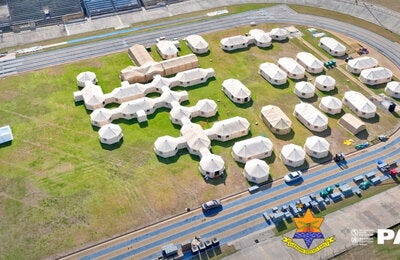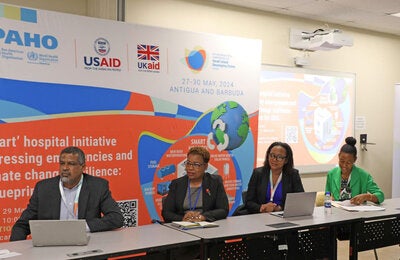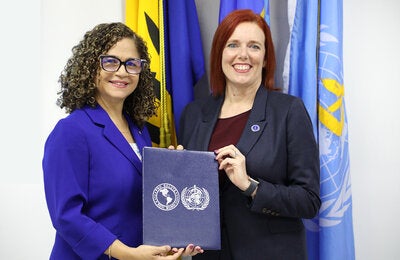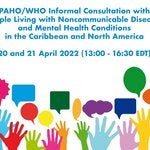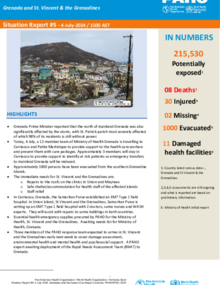Grenada is a country comprised of three main islands (Grenada, Carriacou, and Petite Martinique) and several smaller uninhabited ones. Located in the southern Caribbean about 160 km north of Venezuela, it has a total area of 344 km2.
In 2000 the total population of Grenada was 107 432 inhabitants; by 2023 this figure had risen to 126 183, representing a 17.5% increase. Regarding the country’s demographic profile, in 2023 people over 65 years of age accounted for 10.3% of the total population, an increase of 2.0 percentage points compared to the year 2000. In 2023, there were 100.2 women per 100 men and 43.4 older people (65 years or older) per 100 children under 15 years of age, as can be seen in the country’s population pyramids, distributed by age group and sex (Figure 1). Considering the population between 15 and 64 years of age to be potentially active (i.e., potential participants in the labor force), this group represented 65.8% of the total population of the country in 2023 (83 082 people). When we add these figures to the potentially passive population (30 056 under 15 years of age and 13 046 over 65 years of age), the result is a dependency ratio of 51.9 potentially passive people per 100 potentially active people. This ratio was 71.4 in 2000.
Life expectancy at birth in 2023 was 75.5 years, lower than the average for the Region of the Americas and 2.7 years higher that in 2000.


